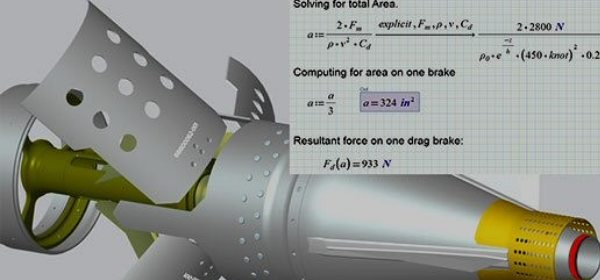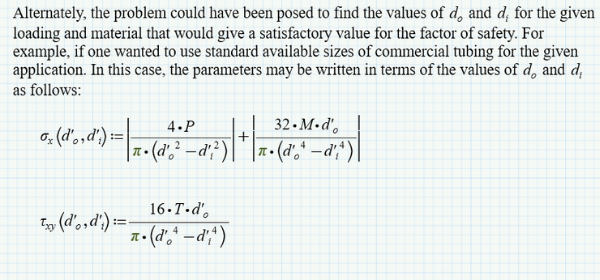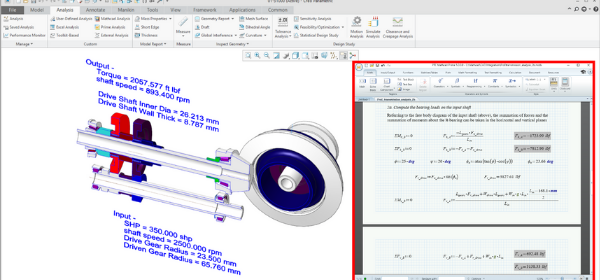All engineers perform calculations. They use math to calculate performance characteristics, component size and thickness, and margins of safety. Engineers also design CAD models for products based on those calculations.
But all too often, engineering calculations are disconnected from design models. That’s where engineering math software can help. With this technology, mathematical calculations can drive engineering product definition, so that dimensions update the way we want with changes to other factors.

CAD design shown with sample equation used to calculate drag on model.
Here are four reasons all design engineers should drive 3D models with engineering math software.
Often you want to define an equation or mathematical expression to drive the values of model dimensions or the number of instances in a pattern. You want those values to update automatically whenever other dimensions or parameters change. In Creo Parametric, a 3D CAD modeler, these equations are called relations, and they are powerful.
However, engineering math software can offer even more capabilities, such as:
Creo Parametric relations (left) compared to PTC Mathcad
Engineers typically have notebooks in which they perform calculations, take notes, and record decisions from trade studies. This information is critical in the product development process, yet it’s typically kept in an individual’s possession rather than stored with engineering models.
What happens when these engineers release the model, switch projects, or leave the company? Do they take their notebooks with them, or do the notebooks get put in storage, never to be seen again?
Most likely, your enterprise loses this information, no one can access it, and it can’t get leveraged for future products.
By documenting the methodology, history, and results of your decision-making processes in engineering math worksheets, you can ensure that your company’s intellectual property (IP) remains a vital resource for years to come instead of being lost to the ages.

Documenting calculations in PTC Mathcad.
Engineering math software provides hundreds of functions covering a wide range of areas, including solving and optimization. This allows you to solve for values in complex systems, and in addition, also ensures you can find the best possible solution.
What kind of cost savings, sales, and customer satisfaction can you realize with a 5, 10, or 20% improvement in performance, strength, weight, or other factors? How do engineers and designers find the optimal values for critical dimensions and parameters today?
Instead of forcing you to rely on hit-or-miss guesswork, engineering calculation software can optimize designs, getting you to market faster at lower costs.
The guiding philosophy behind parametric modeling is to build features, parts, and assemblies in such a way that when you make a change, those changes are propagated throughout our models; this is design intent.
Models can pass dimensions to your math worksheet as inputs to calculations, which then sends other dimensions back to your model to be updated. By linking your models to your engineering calculations, you achieve design intent on a higher level.
There are two different ways in which you can drive parametric models from engineering math worksheets:

CAD transmission assembly in Creo Parametric and its driving worksheet in PTC Mathcad.
By driving CAD geometry from linked engineering calculations, you build intelligence into your products.
Math makes the difference between design and engineering. If you’re not showing your work and driving your product design from connected engineering calculations, you’re losing valuable IP every day. Start building optimized smart design models with the power of math!
Try PTC Mathcad for yourself. Download PTC Mathcad Express free today.